#family Lycaenidae
Explore tagged Tumblr posts
Text

Polyommatus icarus (female)
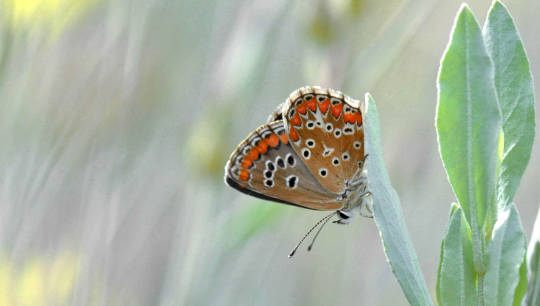
Polyommatus icarus / L'Argus Bleu / L'Icare / L'azuré de la Bugrane.
Aiguilles de Bavella, Corse du sud, France.
22 juillet 2018.
#polyommatus icarus#common blue#European common blue#family lycaenidae#subfamily polyommatinae#range: palearctic
28 notes
·
View notes
Text

Provence Hairstreak (Tomares ballus), family Lycaenidae, found in northern Africa and SW Europe
photograph by @yaylalperen
14K notes
·
View notes
Text


The common blue butterfly or European common blue (Polyommatus icarus) is a butterfly in the family Lycaenidae and subfamily Polyommatinae. The butterfly is found throughout the Palearctic and has been introduced to North America. Butterflies in the Polyommatinae are collectively called blues, from the coloring of the wings. Common blue males usually have wings that are blue above with a black-brown border and a white fringe. The females are usually brown above with a blue dusting and orange spots. -Wikipedia
32 notes
·
View notes
Text
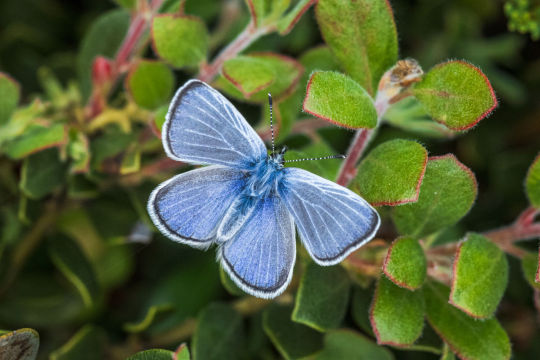
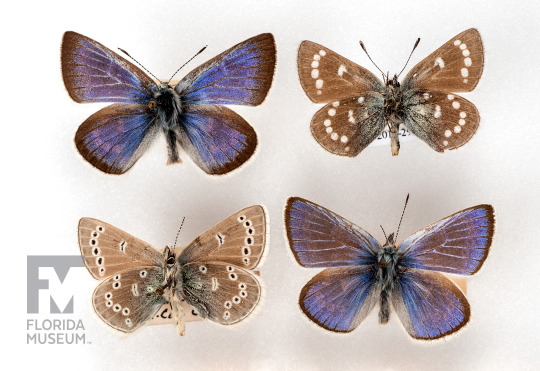
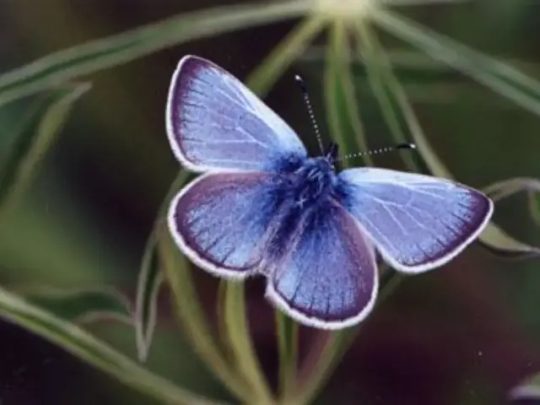
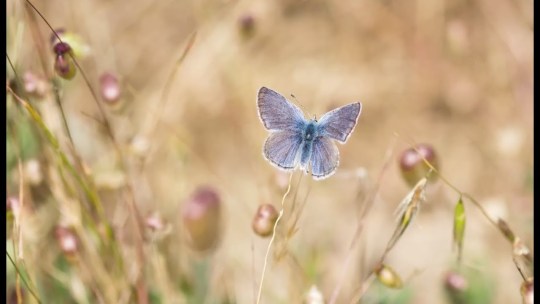
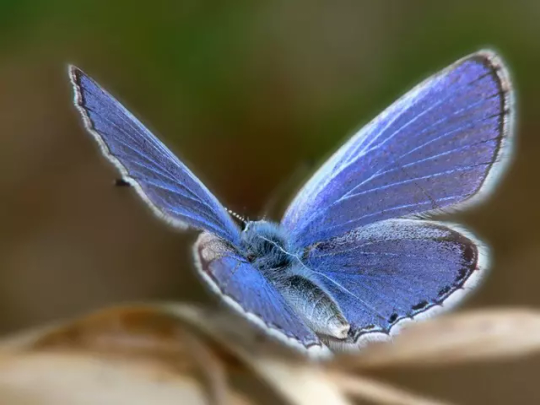
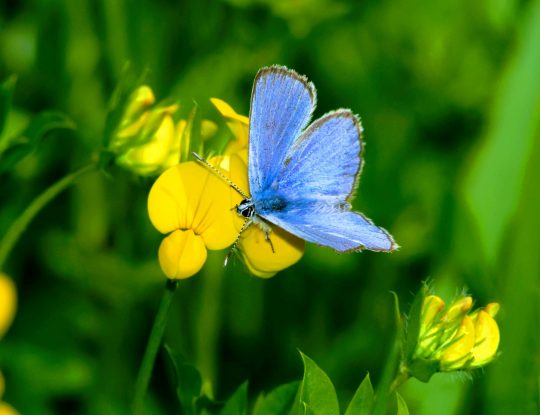

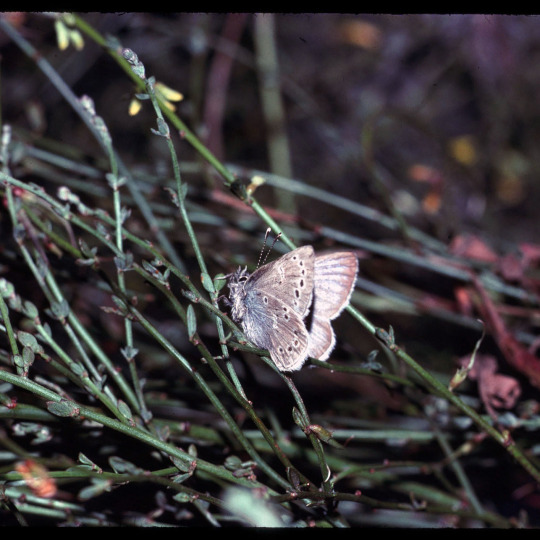
Glaucopsyche xerces, better known as the Xerces blue butterfly or simply xerces blue is a recently extinct species of butterfly in the gossamer-winged butterfly family, Lycaenidae. The species was first described and documented in 1852, and was named after the French spelling of "Xerxes", the Greek name of the Persian kings Xerxes I and Xerxes II of the fifth century BC. Reaching around .7 to 1.18inches (18 to 30mm) in wingspan length, the xerces blue is a small, brightly colored butterfly characterized by iridescent blue on the upper wing surfaces of males, and pale spots below. It was endemic to the coastal sand dunes of the upper San Francisco Peninsula where the Xerces fed on vegetation belonging to the genus Lotus and Lupinus. The loss of the Lotus plant that the butterfly fed on while in its larval stages is believed to be the main reason for the extinction of the Xerces blue. As growing urban development resulted in extensive disturbance and loss of habitat of which the lotus plant couldn’t survive. Lupinus, the Xerces blue's other main adult food source, was not suitable for the larval stages. By the early 1940s the Xerces Blue was driven to extinction, becoming one of the first and most well-known butterflies in the United States lost due to human impact, with the last confirmed sighting of a xerces blue occurring in 1943 on land that is now part of the Golden Gate National Recreation Area. The butterfly’s extinction inspired the foundation of the Xerces Society for Invertebrate Conservation in 1971, as well as ushering the need for insect and invertebrate conservation into the public mindset. Today there are ongoing efforts to reestablish related butterflies in the Xerces blue's former habitat such as the silvery blue and the Palos Verdes blue. Also the possibility of reviving the xerces blue via de-extinction is being explored.
#pleistocene pride#pliestocene pride#cenozoic#holocene#extinct#animal#animals#insect#butterfly#animal facts#xerces#xerces blue#bug#bugs
28 notes
·
View notes
Text
team xaco ( zacho, after zacho blue ) is a team from beacon academy featuring xerces flores, mazarin argus, caesius parion, and oak arhopala. whereabouts are unknown after the fall of beacon, where xerces tragically died. done with this picrew even if it leaves stuff wanting.




i had a rwby oc named mazarin i remember fucking nothing about but i think it's time we overhaul her
#all of them are based on different butterflies from the same family; lycaenidae#xerces flores — xerces blue (extinct)#mazarin argus — mazarine blue#caesius parion — large blue#oak arhopala — japanese oakblue#i have more done on mazarin but the rest i will cook up#edit: i need to make it known that while editing oak i was struck by the fact that they reminded me of rachel amber and sat back in my chai#i miss rachel. i miss her a lot.#shes on my mumu but like. still.
3 notes
·
View notes
Text

I told you @coallise I will do it Monday or Tuesday, lol. I didn't say I wouldn't. 🤣
Color scheme based on this moth, aka
Fluffy Tits (Zeltus amasa), family Lycaenidae, found across SOuth and SE Asia
Post

29 notes
·
View notes
Text

Front cover - page 2 - next
Metamorphosis
Here's page 2!
I will update (hopefully) every week on Thursday.
If you're interested, the butterfly who runs into Aziraphale is an Old World Swallowtail (Papilio machaon). It's Gabriel, only making a guest appearance to be an arsehole.
The two humans are my parents.
I have decided that this story is set in France, because 1. I have no idea what butterflies there are in Britain, and 2. I couldn't pass up the opportunity to use the closeness between Aziraphale's name and species (Azuré bleu céleste in French). "Azuré" designates all blue butterflies of the Lycaenidae family.
Translation: "oh look! A blue butterfly! Take pictures of it in burst mode to see what it is!"
Honestly this is the only instance of French in this. The characters speak English.
Enjoy!
#metamorphosis comic#good omens#good omens fanart#ineffable husbands#aziraphale and crowley#fanart#fanart on tumblr#comics#good omens comic#metamorphosis
22 notes
·
View notes
Text

The Common Pierrot (Castalius rosimon) is a small butterfly found in India that belongs to the Lycaenidae or Blues family. Taken at Kadavoor, Kerala, India.
51 notes
·
View notes
Text


[PHOTOS TAKEN: MARCH 3RD, 2023 | Image IDs: Two photos of two different species of butterfly feeding from and pollinating the white, green, and yellow flowers of a couple plum trees. Both butterflies are of the family lycaenidae, with one being black and white while the other is a brownish-grey with streaks of black and white and a spot of orange. /End IDs.]
Part 3! Surprised to see these species so early compared to last year
#Lycaenidae#Butterflies#Butterfly#Lepidoptera#insects#insect#bug#bugs#Bugblr#entomology#invertebrates#inverts#arthropods#photos#photo#Wasp House Sights
23 notes
·
View notes
Note
Had some fun musing on Mari-butterfly names:
Glasswing/Greta Oto, for the Glasswing Butterfly (May play into a 'I show you who you truly are/I am honest' theme)
Andromica, for the Andromica clearwing (Same themes as the Glasswing butterflies)
Gossamer, (Plays into her fashionista side and a spiderweb theme)
Lycaenidae, for the gossamer-winged butterflies
Lotis, for the Lotis Blue, (Mostly for her hair)
Idas, for the Idas blue (Mostly for her hair)
Candalid, for Candalidini
Niphan, for Niphandini
Also neutral one's that could apply to a lot of characters:
Madame Metamorphosis, for the transformation aspect
Heliconius/Heliconian, for the longwing butterflies
Vanessa Cardui, for the Painted Lady Butterfly
Painted Lady, for the Painted Lady Butterfly
Chrysallís, for the pupal stage of butterflies
Nympha, for the pupal stage of butterflies
Aureli, for the pupal stage of butterflies
Sevenia, for the tree nymph butterflies
Riodinidae, for metalmark butterflies
& finally some Chloe one's for if she steals/saves, Nooroo & goes wild:
Zerene, yellow & Black, plus a homage to Taking a Crack at being a Parent by generalluxun.
Cesonia, or the Zerene family of butterflies & the yellow & Black color scheme
Chrysós, for gold, has ties to Chrysallís, the pupal stage of butterflies
Coliadinae, for the sulphurs or yellow butterflies
Colias, for the clouded yellow butterflies
You know I hate that Canon used 'Monarch' because damn it that was the name I use for Butterfly!Chloé and now I gotta either double down and explain every time I use the name or pick a new one(these are good options tho)
11 notes
·
View notes
Text
@fzzypop submitted: hii!! little guy found in [remove]! any clue who this may be ? they were reaally tiny !! (censor the location please also) tysm !!

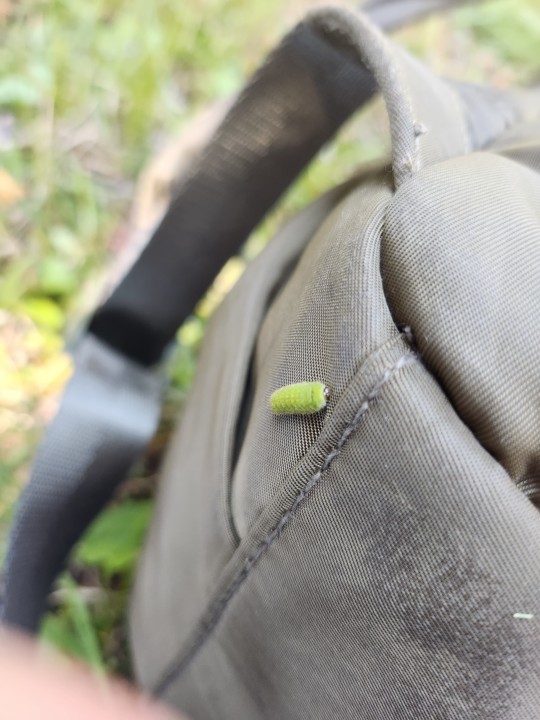

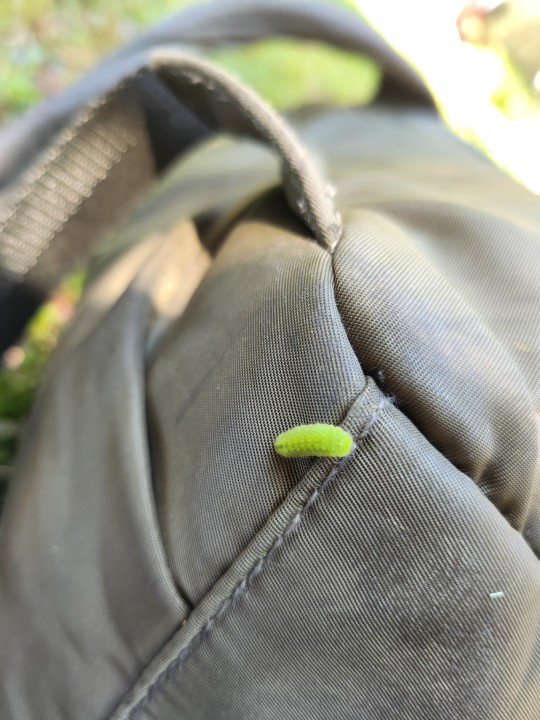
Hello! Looks like a butterfly caterpillar in the family Lycaenidae, so that includes things like blues, azures, coppers, and hairstreaks. But I couldn't tell you exactly which species it is at this stage!
61 notes
·
View notes
Text

Provence Hairstreak (Tomares ballus), family Lycaenidae, found in northern Africa and SW Europe
photograph by @yaylalperen
4K notes
·
View notes
Text

An elegant butterfly (Satyrium abdominalis aka Gerhard's black hairstreak from Lycaenidae family) on an ox-eye daisy (Leucanthemum vulgare), collecting pollen.
“Gerhard's black hairstreak” Photograph by Gökhan Damgacı
#Photography#Nature#Nature photography#wildlife#wildlife photography#animals#animal photography#butterfly#butterflies#butterfly photography#lycaenidae#flower photography#flowers#oxeye daisy#daisies#daisy#nature lovers#animal lovers#flower lovers#flower power
5 notes
·
View notes
Note
hi! do you have a favorite kind of bug? if so, what is it?
I have several that I really like so I'm gonna make a list of them! they're not really in any particular order, they're just kind of a group of favourites. I think this is gonna be mostly lepidoptera lol.
1. Sphingidae just in general, but especially Elephant Hawkmoths, Death's Head Hawkmoths, and the Pacific Green Sphinx. the two brown caterpillars we had last year were Elephant Hawkmoths and I still can't believe we actually got to raise some
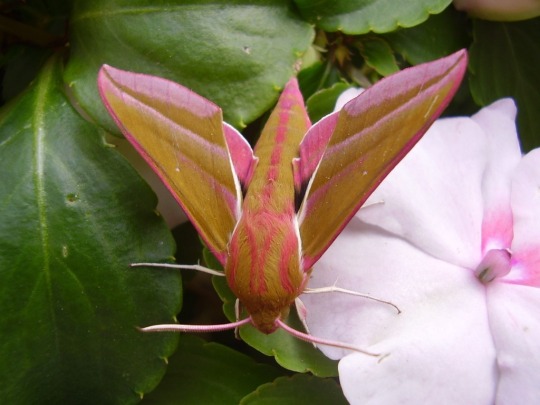
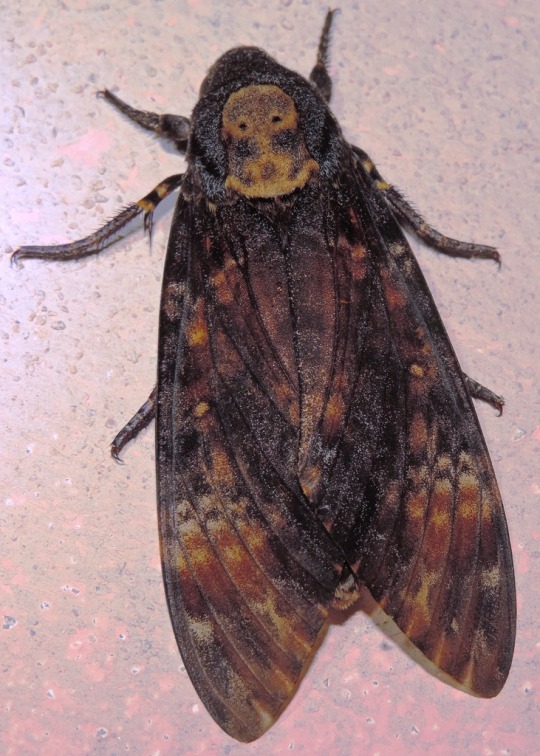

(image sources: Elephant Hawkmoth, Death's Head Hawkmoth, Pacific Green Sphinx)
2. Lycaenidae are also one where it's just a whole family of lepidoptera we like (a friend mentioned them and we looked them up and were like "oh they're amazing" and they quickly became a favourite). I especially like the subfamily Polyommatinae (the Blues), with some of my favourites being the Friday's Blue, Melissa Blue, Holly Blue, and Western Pygmy-Blue. a lot of them have really interesting interactions with ants, such as relying on them for protection, but I know at least one species (the Large Blue) actually eats ants as a caterpillar
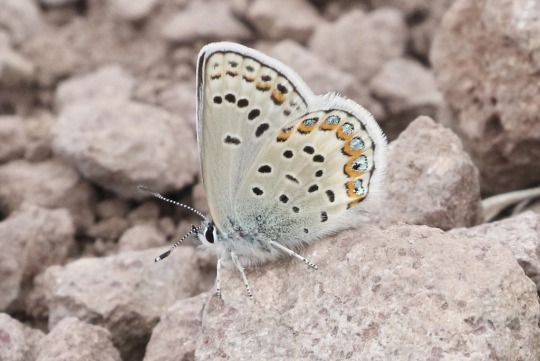
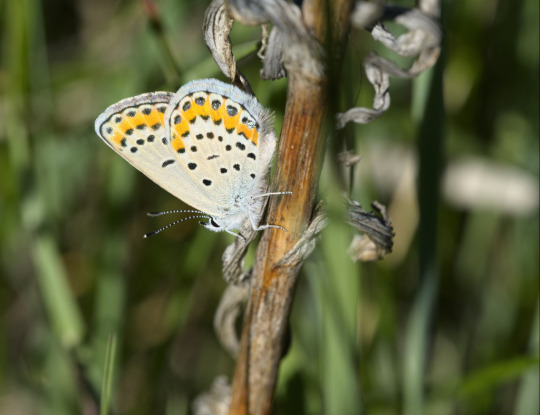


(image sources: Friday's Blue, Melissa Blue, Holly Blue, Western Pygmy-Blue)
3. Hesperiidae, also known as skippers, are another one where I love them just in general but I think the Fiery Skipper is probably one of my favourites. they're just very cute and they kind of remind me of hawkmoths but they're in the superfamily Papilionoidea so they're actually a type of butterfly

(image source)
4. the Sargasso Emerald is one of my favourites just because I think it's a cool little dude. look at this funky guy

(image source)
5. the Vapourer/Rusty Tussock is another one of the species we raised last year and I didn't know much about them before raising one but they have very distinctive looking caterpillars and the adults are sexually dimorphic to the point of looking like completely different species. the caterpillars are known to eat a huge variety of plants which is really convenient when it comes to raising them. I also love tussock caterpillars in general because they're all so fluffy and funky looking
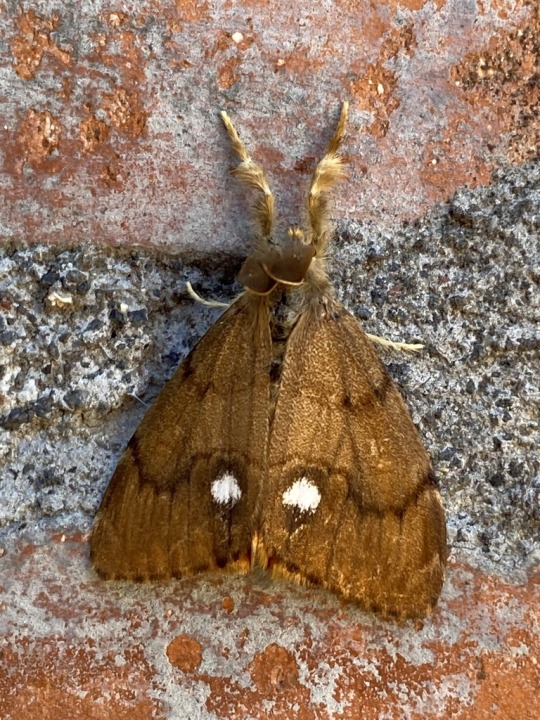
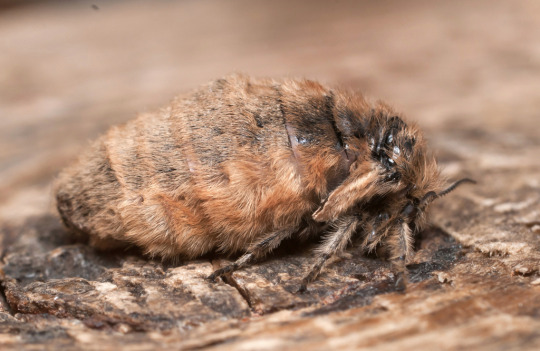

(image sources: male Vapourer, female Vapourer, caterpillar)
6. I feel like I should include cicadas on the list because I just think they're really cool and I'm fascinated by periodical cicadas especially

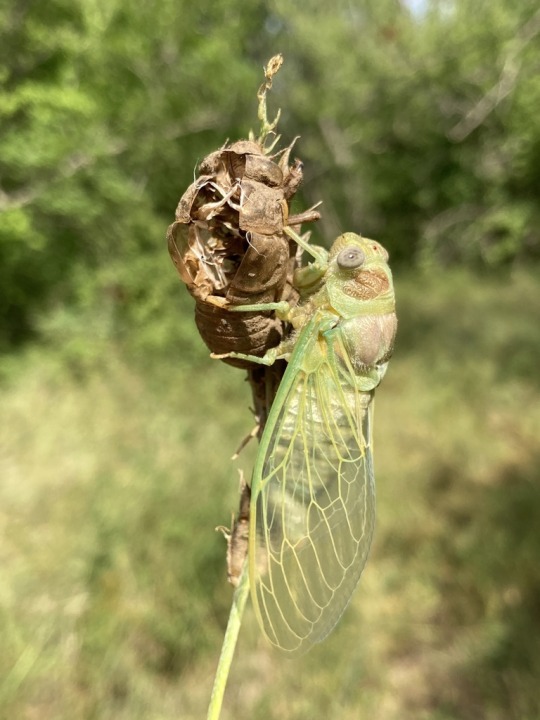
(image sources: aberrant Cassin's 17-year Cicada, Common Cicada)
7. given that we're called the Ant System I think I'm contractually obligated to include at least one ant and I want to introduce everyone to the absolute little weirdos that are honeypot ants. some members of the colony store food in their abdomens and then regurgitate that for the other ants when needed. I think they're just fascinating little guys
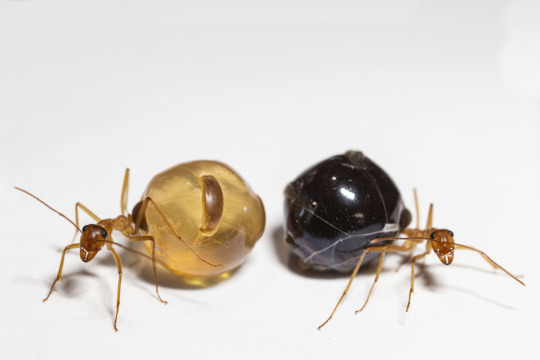
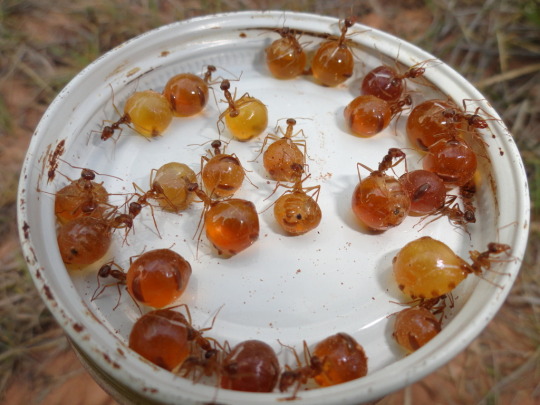
(image sources: Mexican Honeypot Ants, Myrmecocystus)
8. I almost forgot to include these little guys but carpet beetles are going on the list because I see them a lot and I think they're pretty cute little guys
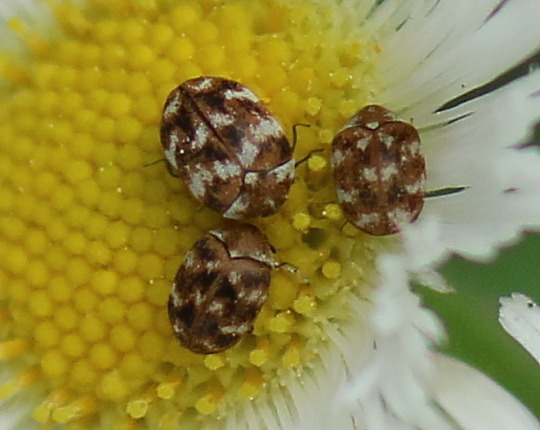
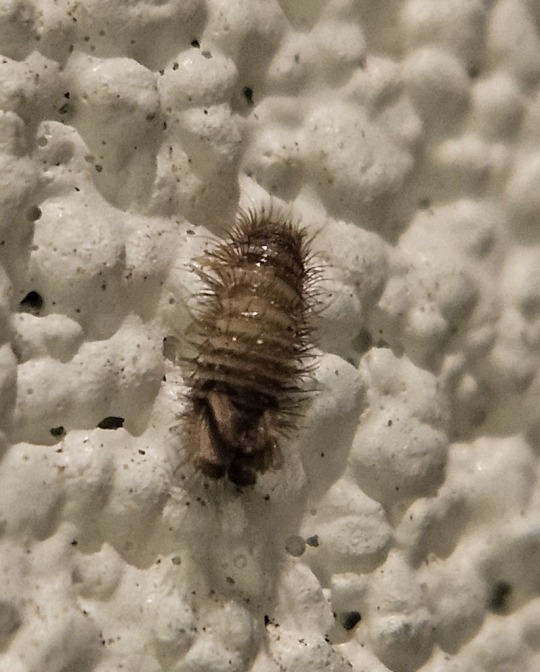
(image sources: adults, larva)
anyway I feel like this is a good list but I've probably also missed so many species that I absolutely adore and I keep stumbling across new ones that are really cool.
I've also been fixating on aberrant lepidoptera recently which isn't really a favourite kind of insect so much as just me being fascinated by all the ones where the colours or patterns are different to what you'd expect for that species
#ask#🍬 post#thanks for the ask! this was really fun to answer#there really are so many species I absolutely love and I could probably just go on for hours making this longer and longer#I have a soft spot for every species we've raised as well as for pest species and ones that people tend to not like very much#plus the thing mentioned above about aberrants. I love individuals of a species that look really weird and different#long post#insects#butterflies#moths#lycaenidae#hawk-moths#hesperiidae#tussocks#ants#cicadas#trypophobia tw#<- for the wings on the lycaenids
6 notes
·
View notes
Text

Scientific Name: Strymon melinus Common Name(s): Gray hairstreak Family: Lycaenidae (gossamer-winged butterfly) Life Stage(s): Adult Location: Plano, Texas Season(s): Summer
The orange abdomen indicates this is a male.
Many butterflies and moths have eyespots on their wings, either to repel predators or to divert attention away from the head to a less vulnerable part of the body. Hairstreaks (subfamily Theclinae), with their thin tails extending from the hindwings, add movement to this illusion: the hindwings scissor up and down to flick the tails in a way similar to twitching antennas. Together with the nearby eyespots, it does a convincing job of tricking an onlooker into thinking the rear of the butterfly is actually the front. The effect can be best seen starting at 1:23 in the video (not mine) below.
youtube
#Strymon melinus#gray hairstreak#Lycaenidae#Plano#Texas#summer#gray#butterfly#Theclinae#Lepidoptera#insect#bugblr
6 notes
·
View notes
Note
Hi :D Do you like butterflies? I think they are really really cool n was wondering if you had a favourite one or such :]
I adore butterflies, absolutely!
If I had to pick a favourite one, it would have to be the Mazarine Blue butterfly, of the Lycaenidae family; I find them rather pretty.


6 notes
·
View notes